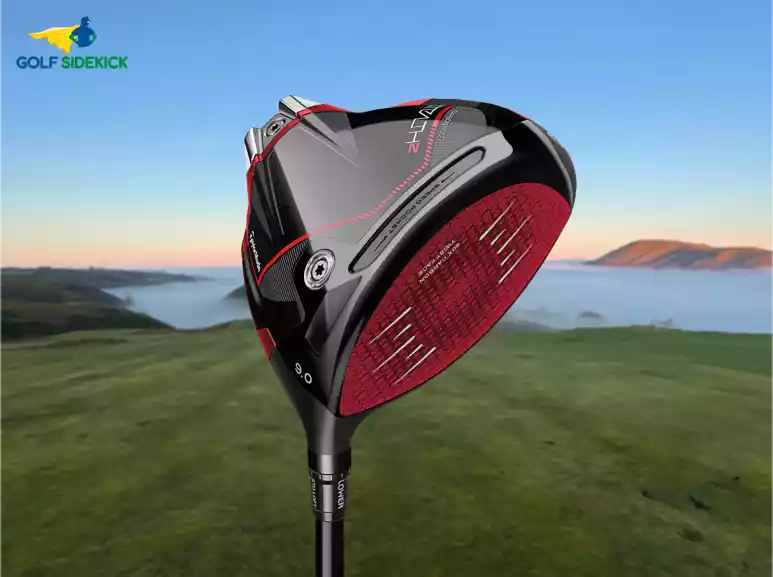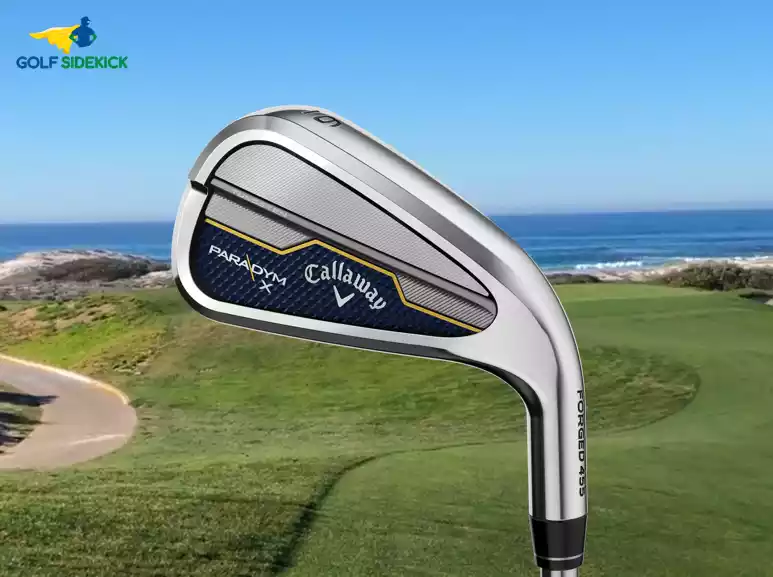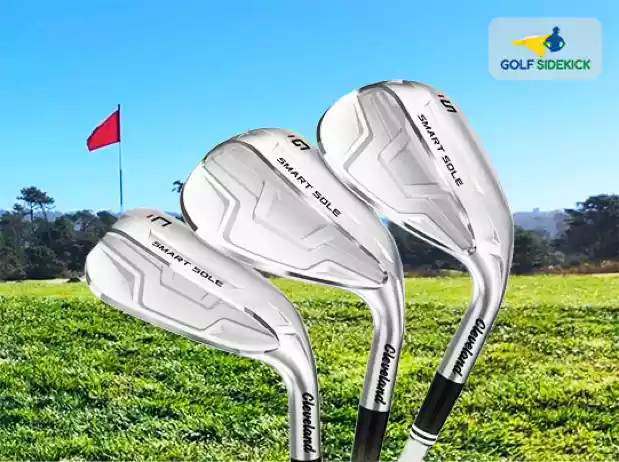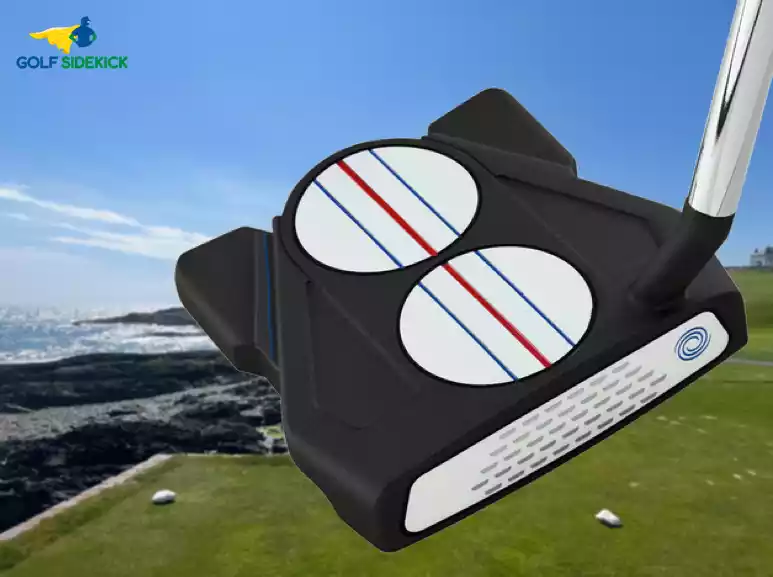Last Updated on January 2, 2024 by Matt Greene
*Read our review guidelines.
Finding the perfect golf club sets for your game is already a challenge, and it becomes even more daunting if you play golf as a left-handed player. While only about 10 percent of the world's population is left-handed, left-handed golfers are even rarer. Among the notable left-handed golfers are Phil Mickelson, fondly known as 'Lefty,' boasting six Major wins, along with fellow Masters champion Bubba Watson and recent British Open winner Brian Harman.
Interestingly, some left-handed guys choose to play golf right-handed, further reducing the number of left-handed golfers. If you're among the left-handed players in need of specialized clubs, the quest to find the best left-handed golf clubs can be quite a journey. So, how do you go about discovering the ideal equipment tailored to your game? In this article we've got you covered. We've found the best left handed golf clubs though the bag and you'll surely be able to find a match.
Best Left Handed Golf Clubs 2024
- TaylorMade Stealth 2 (Best Left Handed Driver)
- Ping G430 MAX woods (Best Left Handed Fairway Woods)
- Callaway Paradym Irons (Best Left Handed Irons)
- Cleveland Smart Sole Wedges (Best left handed wedge for any level)
- Odyssey 2-Ball Ten Triple Track Putter (Best Left Handed Putter)
TaylorMade Stealth 2
Probably the best driver out on the market

My buddy Mike is a lefty and picked up a Stealth 2 at the start of this season. It was his first "proper" driver and he went for the draw biased model with a little extra loft to suit his swing. He's a strong guy who can generate a lot of power but his miss was a slice. This club with the stock Ventus shaft in stiff flex is and absolute WEAPON.
The sound this club makes when he hits it is like nothing I've ever heard. All he wants to do now is get out on he course and hit bombs! The adjustability of the club means he can dial in the settings as his game progresses which provides great value for money.
The red carbon face looks different for sure but you don't see it at address. The design for this version of the Stealth offers increased MoI and ball speed meaning even off center hits get big distance.
Mike didn't strike a few on the day I played with him, and he was still getting the ball way down there with really solid accuracy. What was most encouraging was that his misses were only on one side of the course, whereas before he could hook or slice the ball.
TaylorMade don't limit left handed options and you will get the full range of shaft flexes and heads to choose from. The stock offering as usual is excellent so you will be able to get playing straight out of the box.
Pros
Cons
PING G430 MAX Fairway Woods
Just the best woods you can get

I'm an unapologetic PING fairway wood fanatic. I've got a 3 wood, 5 wood, and 7 wood and I love them. They are so easy to hit from any lie and the ball just gets up in the air with a minimum of fuss. They are are my go to clubs on the golf course when I just have to get a ball in play.
PING have always looked after left handers and you can get all of their top clubs in a left handed spec. The MAX models of the G430 series are idea for all players, you don't need to be a low handicapper to play these clubs.
The shape of the G430 when looking head-on to the face definitely appears to be more of a hybrid shaped face. It's not a tall face like a mini-driver at all. This makes it really feel easy to hit off the fairway.
The sole is much flatter than what you would expect in fairway woods and sits very nicely on the ground behind the ball. Coupled with the low profile face, and it feels like an easier to hit hybrid. This will help getting the ball off tighter lies like fine-grass fairways and of harder pan ground.
The club is light but the head is just heavy enough to actually feel it which is important to know where the face is in the swing. This fairway wood will fit most levels of golfer and is right in line with their drivers...easy to hit and high launching. I play off between 1 and 3 handicap and this is forgiving.
Pros
Cons
Callaway Paradym Irons
Always accessible irons from Callaway

Paradym is a meticulously crafted golf iron targeted at golfers seeking a player's distance club with a refined shape and premium forging. Designed to accommodate players ranging from around a four-handicap up to 12, its loft configuration sets it apart in the best players' distance irons category compared to the more powerful X model.
This iron boasts the elegant appearance of a players' club while delivering a forgiving performance, making it an excellent choice for slightly more skilled players than the Apex iron by Callaway.
To enhance its playability, the Paradym features a pre-worn leading edge, ensuring efficient turf interaction and increased forgiveness during shots. Additionally, to precisely position the center of gravity for each club, up to 67g of Tungsten is strategically placed internally and externally. This strategic weighting results in easy launch capabilities and amplified ball speeds even on off-center hits, a critical advantage when aiming for targets and avoiding falling short.
Callaway take care of left handers and you will get all the options that the right handers are offered. These will be in your bag for a long time.
Pros
Cons
Cleveland Smart Sole Wedges
You can't go wrong with Cleveland wedges

You can find me using both C and S wedge from Cleveland in this video on my Youtube channel. The newest version of these wedges now includes a G wedge so you have C, G and S for a full complement of wedges.
Add the C wedge and G wedge in unison with the Smart Sole range and you have two potent wedges that are going to severely lower your scores. The C wedge is 42 degrees which is pretty much an 8 iron while the G wedge is 50 degrees to give you a nice gapping between the C and S wedge These 8 degrees allow for a lot of versatility for the shots inside 100 yards.
With the large sole of the club, you're going to glide through tall grass and fairways alike. Around the green you're not gonna hit those duffed chips that go a a foot or two. You know, the ones you hit and look around to see if anyone noticed...
The C wedge has less loft at 42°and has been designed for playing around the green but can be used just as effectively from 125 yards with a full swing. While it looks quite radical, this club gets the job done every time. The G wedge at 50° is the between club for more chipping precision and a bit of a shorter full shot than the 42° club.
Easily the best wedges for a high handicapper or beginner struggling with the short game or looking for their first wedges. These two clubs have the potential to rapidly revolutionize your short game from bunkers to green side to pitch shots within 100 yards. No BS.
Pros
Cons
Odyssey 2-Ball Ten Triple Track Putter

I love Odyssey putters for golfers of all levels. The triple track markings are GAME CHANGING for players of all levels, especially when paired with a Callaway Triple Track Ball.
Here are the reasons I love this putter:
Face Feel: The technology used in the face includes a balancing feature that really allows me to feel the club striking the ball. this gave me more confidence to make more putts.
Forgiveness: Even when the putt isn’t struck perfectly, it still rolls pure. it allows shorter putts to hold their line and farther putts to lag their way close to the hole. this is in large part due to the microhinge insert that creates more consistent forgiveness for all putts.
Weight: The weight is ideal for my preference. At 365g I have good control on both short and long putts. For other preferences, weight adjustments are available in the form of two 15-gram weights which can be added.
Alignment: The club boasts sharp alignment with its triple lines and one red line down the middle of the club head when viewed from above.
Looks: This putter is pleasing to the eye so pulling it out of the bag is a nice feeling. From the steel shaft down to the mallet head, the design really makes the putter stand out.
Grip feel: Grip feel was solid. the 2-ball ten triple track has a pistol oversized grip which is comfortable regardless of hand placement.
Pros
Cons
Final Thoughts on Best Left Handed Golf Clubs
In conclusion, left-handed golfers no longer need to feel left out when it comes to finding the best golf clubs for their game. While it may have been a challenge in the past to find suitable equipment, the golf industry has made significant strides in catering to the needs of left-handed players.
When searching for the best left-handed golf clubs, it's essential to prioritize factors such as club fit, brand reputation, club type, shaft flex, and overall performance. Custom fitting is a game-changer, allowing left-handed golfers to optimize their clubs based on individual swing characteristics, height, and skill level.
Reputable golf club manufacturers now offer a wide range of left-handed options, ensuring that left-handed players have access to the same quality and technology as their right-handed counterparts. Whether you're a beginner or an experienced golfer, there are excellent choices available to enhance your game and enjoyment on the course.
How Are Left-Handed Clubs Different From Right Handed Clubs?
The primary distinction between left-handed and right-handed golf clubs lies solely in the orientation of the clubhead. For left-handed players, the clubhead faces in the opposite direction compared to right-handed clubs. However, both left-handed and right-handed clubs use universal shafts and grips, meaning there is no difference in these components, regardless of your playing style. It's worth noting that left-handed putter shafts may be bent to suit left-handed players, but this is the exception rather than the norm.
As for golf accessories like golf cart bags, stand bags, clothing, and golf bags, there is absolutely no difference between those designed for left-handed or right-handed players. These accessories are universally suitable and adaptable for all golfers, regardless of their dominant hand.
️Are left handed golf clubs more expensive?
Left-handed golf clubs are generally not more expensive than right-handed clubs solely due to their orientation. The prices of golf clubs are primarily influenced by factors such as brand, club model, materials used, technology, and manufacturing processes. Handedness is not a significant factor in determining the price of golf clubs.
However, it's worth noting that left-handed golf clubs might have slightly fewer options available compared to right-handed clubs. This could lead to a perception that left-handed clubs are more expensive, but it's not because of the orientation itself. Instead, it's a result of less demand for left-handed clubs in the market, leading to limited availability in certain models or brands.
In the past, there may have been instances where left-handed clubs were priced higher due to limited demand, but as the golf industry has evolved, this gap has diminished. Most reputable golf club manufacturers now produce both left-handed and right-handed clubs with minimal price differences between the two.
To find the best prices on left-handed golf clubs, it's essential to compare prices across various brands and retailers. Additionally, considering pre-owned or used golf clubs can also be a cost-effective option for left-handed golfers looking to save money on their equipment.
How many pro golfers are left-handed?
It's estimated that around 10% of pro golfers play left handed.
Is golf harder for lefties?
Golf is not inherently harder for left-handed players compared to right-handed players. The difficulty level in golf is more dependent on individual factors such as natural talent, technique, practice, and mental focus rather than whether a golfer is left-handed or right-handed.
Left-handed golfers face the same challenges as right-handed golfers when it comes to mastering the game. Both need to develop the same golf swing mechanics, work on their short game, and navigate around the golf course's challenges. Many left-handed golfers have achieved great success in the sport, proving that handedness is not a limiting factor in becoming a skilled and accomplished golfer.
That said, some left-handed players may initially find it more challenging to access a variety of left-handed golf clubs and equipment compared to the wider selection available for right-handed golfers. Historically, the golf industry has been more oriented towards right-handed golfers due to their higher prevalence in the population. However, the golf equipment market has become more inclusive, and nowadays, most major golf club manufacturers offer a range of left-handed clubs, reducing the disparity in availability.
In summary, golf difficulty is not determined by handedness but rather by the dedication, practice, and skill development of the individual golfer. With the right training and equipment, left-handed players can excel and enjoy the game just as much as their right-handed counterparts.
Do lefties have an advantage in golf?
Whether left-handed golfers have an advantage over right-handed golfers is a subject of debate, and the answer may vary depending on individual circumstances. In general, there is no inherent advantage to being left-handed in golf. Golf is a sport that requires a combination of skills, technique, strategy, and mental focus, and these factors are not dependent on a golfer's handedness.
Some points to consider regarding left-handed golfers and any potential advantage:
- Unfamiliarity: Since the majority of golfers are right-handed, there might be some situations where playing against left-handed golfers could be less familiar for right-handed opponents. However, this factor is relatively minor and can be offset by experience and skill.
- Opponent's Perspective: Some golfers believe that left-handed players have an advantage because they are used to seeing golf shots from a right-handed perspective. However, this perspective advantage is mostly limited to head-to-head competition and is not a significant factor in overall performance.
- Course Setup: Golf courses are designed to be fair for all players, regardless of their handedness. Therefore, any potential advantage or disadvantage based on handedness is not intentionally incorporated into course layouts.
- Personal Preference: Some left-handed golfers might feel more comfortable with certain shots or positions on the course, just as some right-handed golfers might feel the same about different aspects of the game. However, these preferences are individual and not a general advantage for all left-handed golfers.
Ultimately, a golfer's success is determined by their skills, practice, training, mental game, and experience rather than their handedness. Both left-handed and right-handed golfers have excelled at the highest levels of the sport, showcasing that no inherent advantage exists based on handedness. The game of golf rewards talent, dedication, and consistency, regardless of whether a player swings from the left or right side.
Should I Let My Child Learn To Play Golf Left-Handed?
Deciding whether to let your child learn to play golf left-handed or right-handed depends on various factors, including your child's natural inclination, physical abilities, and comfort level. Here are some considerations to help you make an informed decision:
- Natural Hand Preference: Observe your child's natural hand preference. Some children naturally show a preference for using their left hand in daily activities. If your child seems more comfortable using their left hand, it might be a good idea to let them learn golf as a left-handed player.
- Ambidexterity: Some children may exhibit ambidexterity, meaning they can use both hands effectively. In such cases, they may feel comfortable learning golf as either a left-handed or right-handed player. You can let them experiment with both orientations to see which one feels more natural to them.
- Comfort and Enjoyment: Learning golf should be an enjoyable experience for your child. If they feel more at ease swinging the club left-handed, it could enhance their overall enjoyment of the game.
- Accessibility of Equipment: In the past, left-handed golf equipment might have been less readily available, but this gap has narrowed significantly in recent years. Many golf manufacturers now offer a wide range of left-handed clubs, making it easier to find suitable equipment for left-handed players.
- Professional Guidance: If possible, consult with a golf instructor or coach who can assess your child's swing and offer personalized guidance on the best approach for their game.
- Golf Lessons: Enroll your child in golf lessons to receive proper instruction and develop their skills. A qualified instructor can help your child learn the fundamentals of the game, regardless of their hand preference.
- Flexibility: While it's essential to consider your child's natural inclination, it's also worth keeping in mind that many right-handed individuals successfully play golf left-handed and vice versa. Golf is a sport that requires skill, technique, and practice, and both left-handed and right-handed orientations can lead to success.
Ultimately, the decision should prioritize your child's comfort, enjoyment, and willingness to learn. Golf is a versatile sport, and players can excel regardless of their hand preference with the right guidance and dedication.
Key Differences Between Right and Left-Handed Golfers
While there are no inherent advantages or disadvantages to being right-handed or left-handed in golf, there can be some key differences between right-handed and left-handed golfers. These differences can stem from variations in swing mechanics, shot tendencies, and course management preferences. Here are some key differences between right and left-handed golfers:
- Clubhead Orientation: The most obvious difference is the orientation of the clubhead. For right-handed golfers, the clubhead faces to the right, while for left-handed golfers, it faces to the left.
- Ball Flight: Left-handed golfers tend to have a natural fade or slice ball flight (ball curves from left to right for right-handed players) as a result of their swing mechanics. Conversely, right-handed golfers may have a natural draw ball flight (ball curves from right to left for right-handed players).
- Course Management: Left-handed golfers may prefer certain shot shapes and strategies to accommodate their ball flight tendencies. For example, on a dogleg right hole, a left-handed golfer might have an advantage with their fade, while a right-handed golfer might prefer a draw to navigate the hole.
- Alignment: Left-handed golfers may need to adjust their alignment on the course, as many golf courses are designed with right-handed players in mind. This means left-handed golfers might need to aim further left on certain shots to compensate for their natural ball flight.
- Equipment Availability: In the past, left-handed golfers had fewer equipment options, but the industry has evolved, and now most major manufacturers offer a wide range of left-handed clubs, reducing the disparity in availability.
- Comfort: Some golfers naturally feel more comfortable swinging from one side or the other. This preference can influence how a golfer approaches the game and the level of confidence they bring to their shots.
